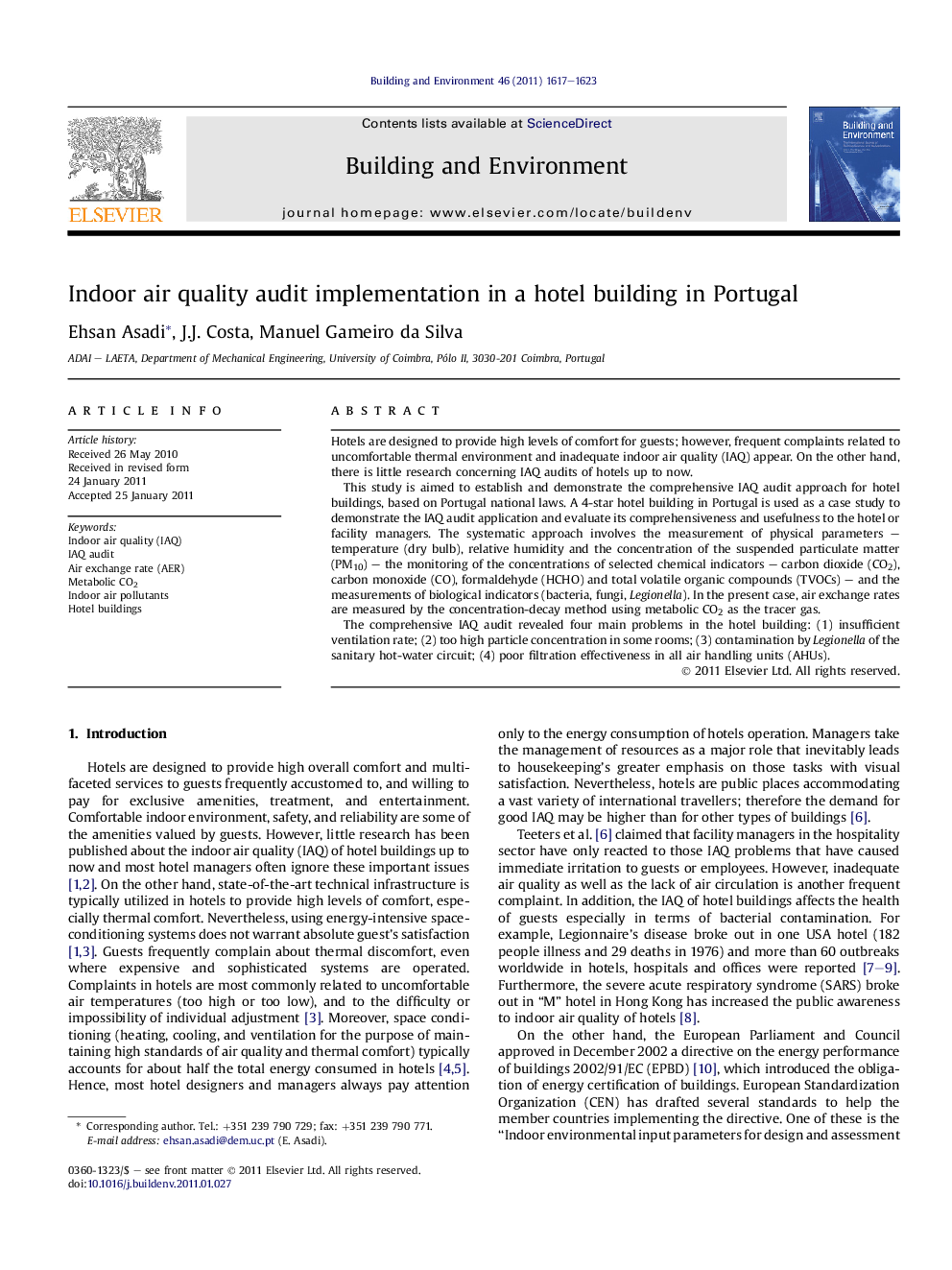| Article ID | Journal | Published Year | Pages | File Type |
|---|---|---|---|---|
| 248712 | Building and Environment | 2011 | 7 Pages |
Hotels are designed to provide high levels of comfort for guests; however, frequent complaints related to uncomfortable thermal environment and inadequate indoor air quality (IAQ) appear. On the other hand, there is little research concerning IAQ audits of hotels up to now.This study is aimed to establish and demonstrate the comprehensive IAQ audit approach for hotel buildings, based on Portugal national laws. A 4-star hotel building in Portugal is used as a case study to demonstrate the IAQ audit application and evaluate its comprehensiveness and usefulness to the hotel or facility managers. The systematic approach involves the measurement of physical parameters – temperature (dry bulb), relative humidity and the concentration of the suspended particulate matter (PM10) – the monitoring of the concentrations of selected chemical indicators – carbon dioxide (CO2), carbon monoxide (CO), formaldehyde (HCHO) and total volatile organic compounds (TVOCs) – and the measurements of biological indicators (bacteria, fungi, Legionella). In the present case, air exchange rates are measured by the concentration-decay method using metabolic CO2 as the tracer gas.The comprehensive IAQ audit revealed four main problems in the hotel building: (1) insufficient ventilation rate; (2) too high particle concentration in some rooms; (3) contamination by Legionella of the sanitary hot-water circuit; (4) poor filtration effectiveness in all air handling units (AHUs).
